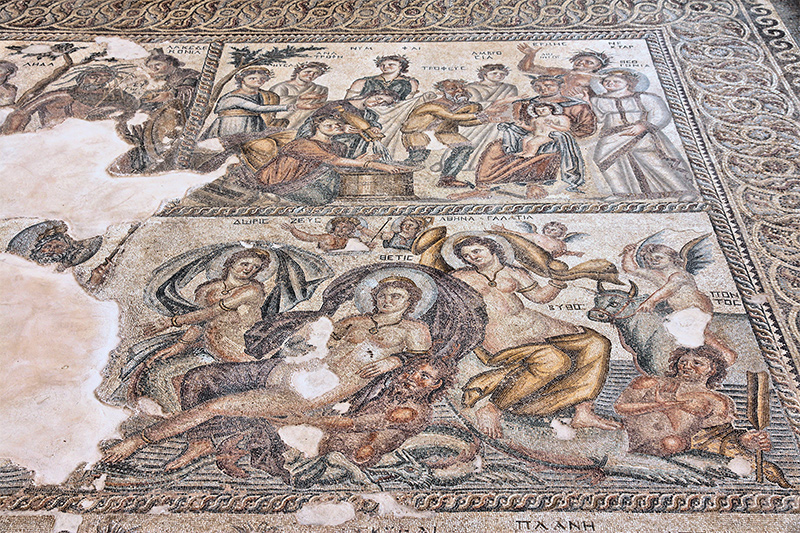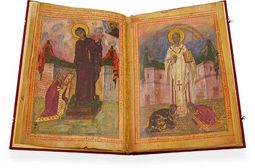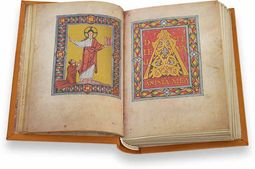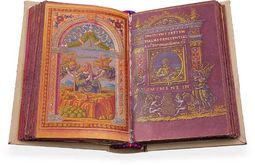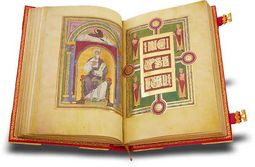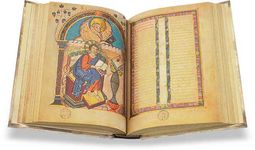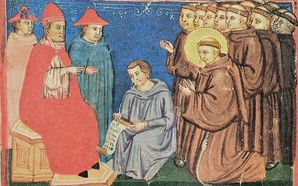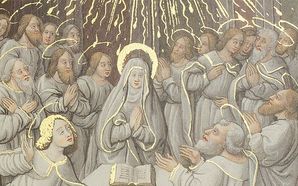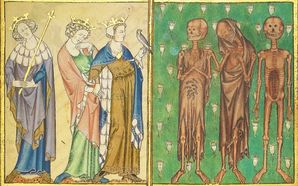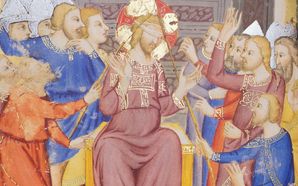The Glimmer of Holiness - Halos in Christian Art
In medieval paintings, saints usually appear with halos behind their heads. The Latin word "nimbus" means "cloud" – however, the halo is by no means a bad-weather cloud, but rather a diffuse appearance of light, a divine glow from within the holy figures.
The nimbus, also called a glory or gloriole, is not a Christian invention. As a symbolic attribute of holiness and divine grace, it was adopted in early Christian depictions from the Hellenistic-Roman tradition, in which deities were also distinguished with a schematic, circular area behind their heads.
Initially, the halo was accordingly reserved for Christ, but this changed in the Middle Ages. Increasingly, not only saints such as prophets, but also angels and symbolic and allegorical figures, such as the Lamb of God or the dove of the Holy Spirit, were equipped with halos. Even popes, bishops, abbots, emperors, and secular benefactors received glories again and again in the course of the Middle Ages.
Initially, the halo was accordingly reserved for Christ, but this changed in the Middle Ages.
Initially, the halo was accordingly reserved for Christ, but this changed in the Middle Ages. Increasingly, not only saints such as prophets, but also angels and symbolic and allegorical figures, such as the Lamb of God or the dove of the Holy Spirit, were equipped with halos. Even popes, bishops, abbots, emperors, and secular benefactors received glories again and again in the course of the Middle Ages.
Colorful Accents and Ornamental Decoration
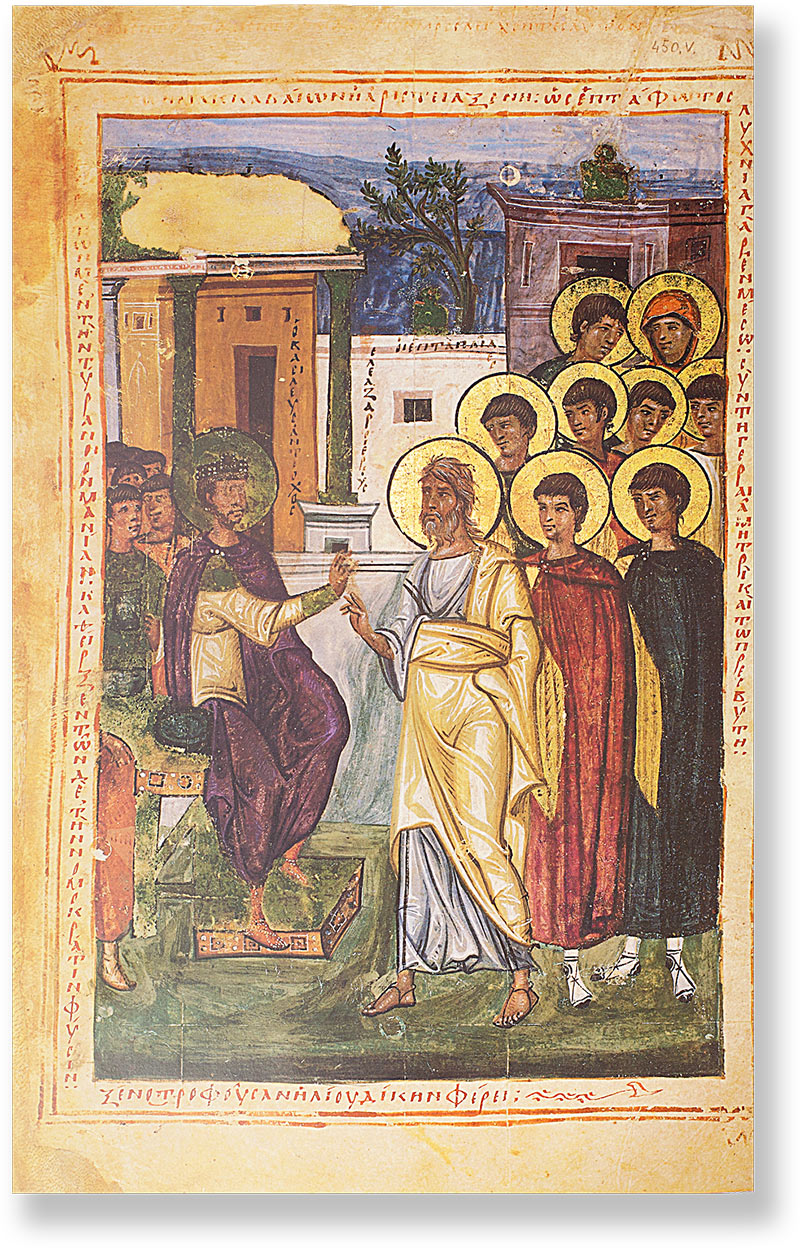
To the facsimile
As we will see, the constant and increased representation of halos spawned diverse design possibilities for the phenomenon of light. Especially in the Late Middle Ages, a wide variety of forms and variants of the classic golden discus developed. However, this did not necessarily have to be gold-colored. Already in antiquity, various colors were used for personal or hierarchical differentiation.
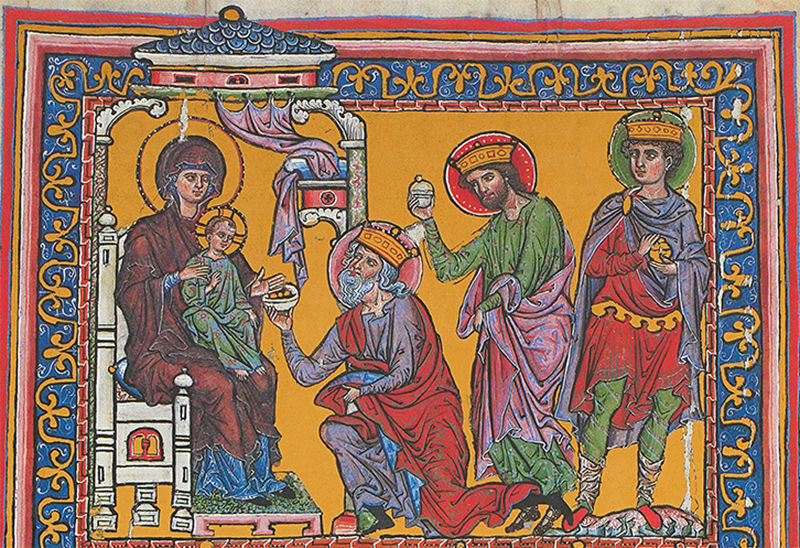
To the facsimile
This tradition was adopted and used until the High Middle Ages, as the Goslar Gospels show. While the Magi are each assigned a color of their own here, Mary and Jesus are given golden halos in keeping with their holiness. Even if other tones were used, gold as the color of the sun remained the highest color hierarchically – its substitute colors yellow and red included.
In stark contrast, the halo of Judas, the traitor, was partially depicted in black during the Trecento.

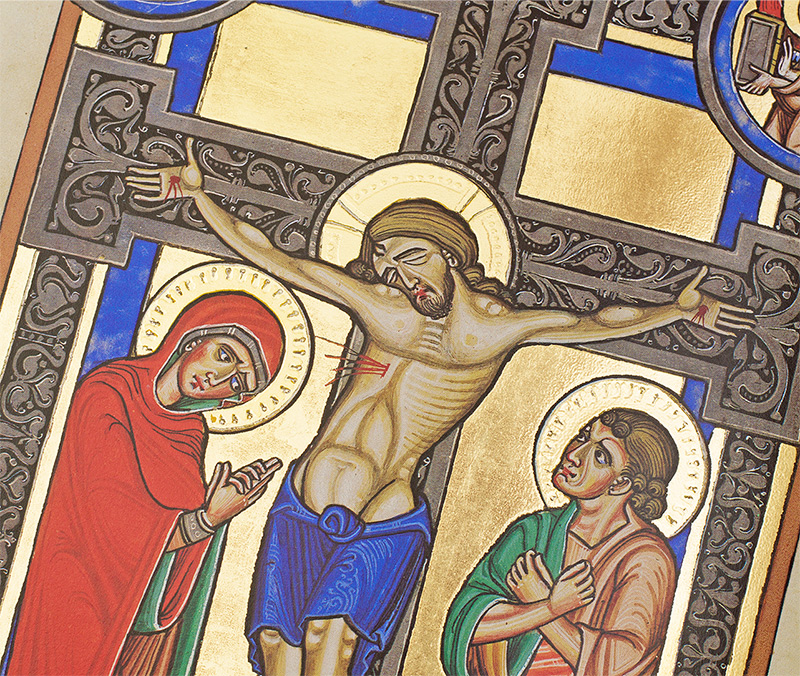
To the facsimile
Medieval artists also liked to accentuate the glories with ornamentation, some of it sculptural, as the detail from the Berthold Sacramentary shows, or adorn them with a decorative border. Thus, for example, red ribbons with white pearls surround the gold-glowing halos of the Evangelists, their symbols, and Christ in the Godescalc Evangelistary.
Halo Variants and their Diverse Forms
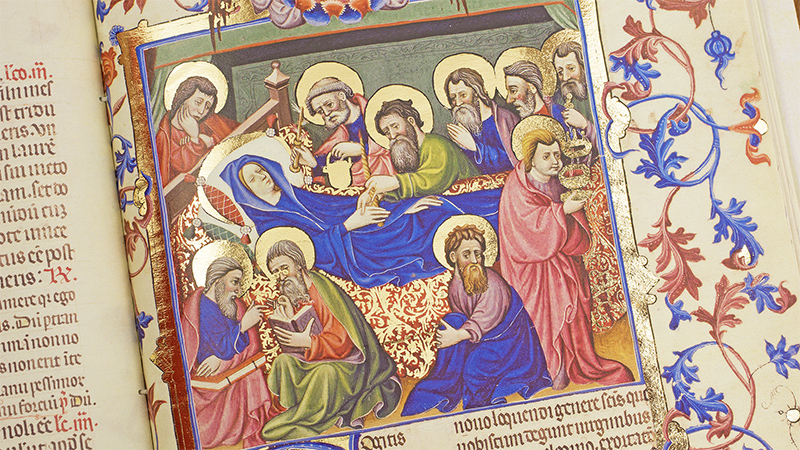
To the facsimile
In addition to the widespread and long predominant nimbus disc, which frames the heads of the saints as a round discus, various versions of this original form developed.
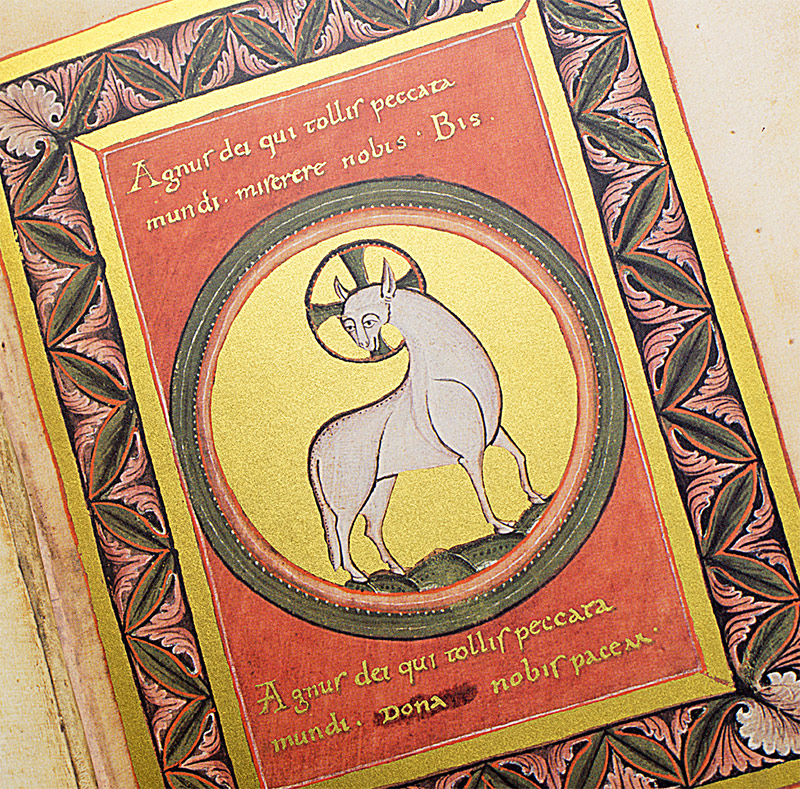
To the facsimile
Probably the most important modification is the cruciform halo, which serves to differentiate the Trinity from the non-divine saints, dignitaries, and angels. It is thus reserved for God the Father and the Hand of God, Christ and the Lamb of God, and the Dove of the Holy Spirit.
God the Father alone could also be endowed with a triangular halo.
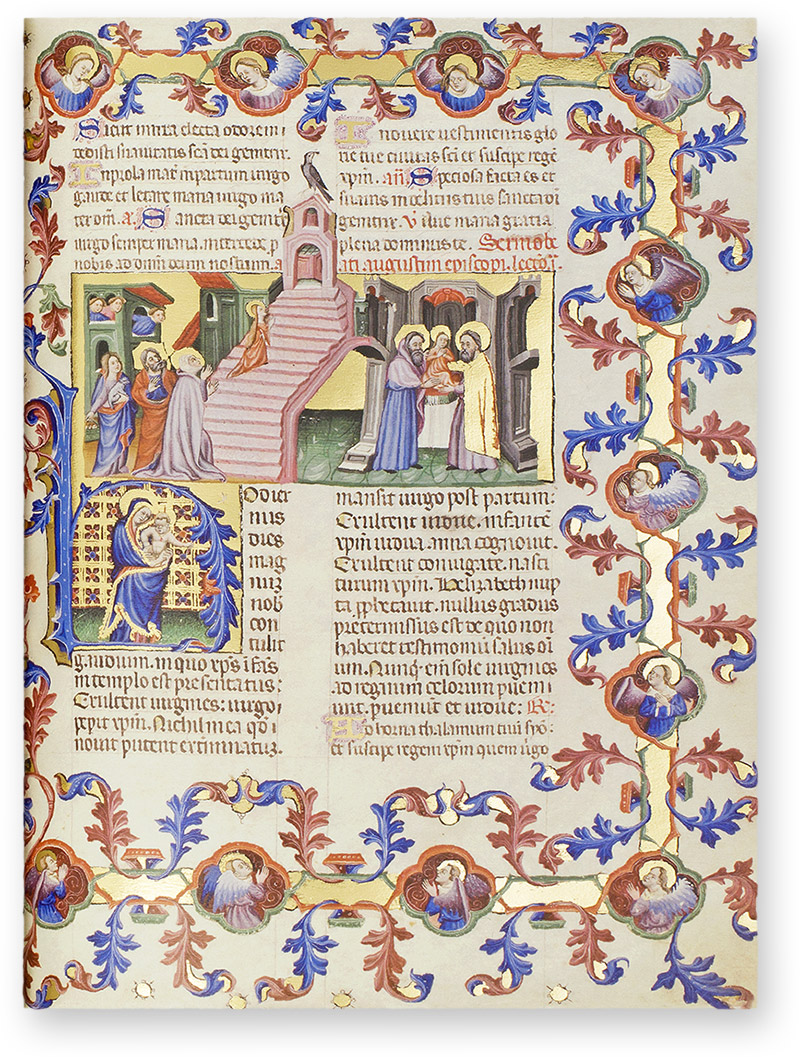
To the facsimile
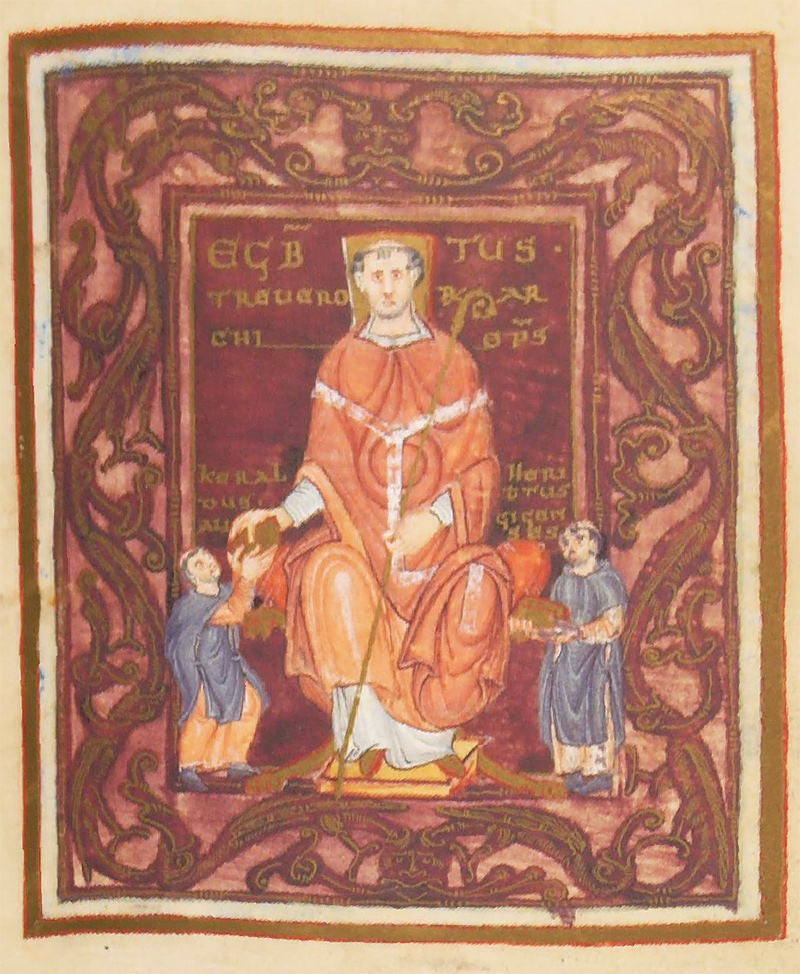
To the facsimile
Rectangular halos, such as the one in the Codex Egberti, were predominantly used in the Early Middle Ages in portraits of still-living persons who were still alive at the time, in order to nevertheless represent the divine grace inherent in them. However, there are also pictorial works that show such figures with a rounded gloriole or no gloriole at all.
Another angular variation of the nimbus is polygonal and was used in the Trecento primarily to distinguish personifications. However, in the somewhat later Breviary of Martin of Aragon, a biblical figure is also given one. Mary's presentation in the temple is shown. While the later Mother of God, the high priest Zacharias as well as Mary's mother Anna are ascribed golden disc nimbuses, Mary's father Joachim in his subordinate role receives a polygonal halo.
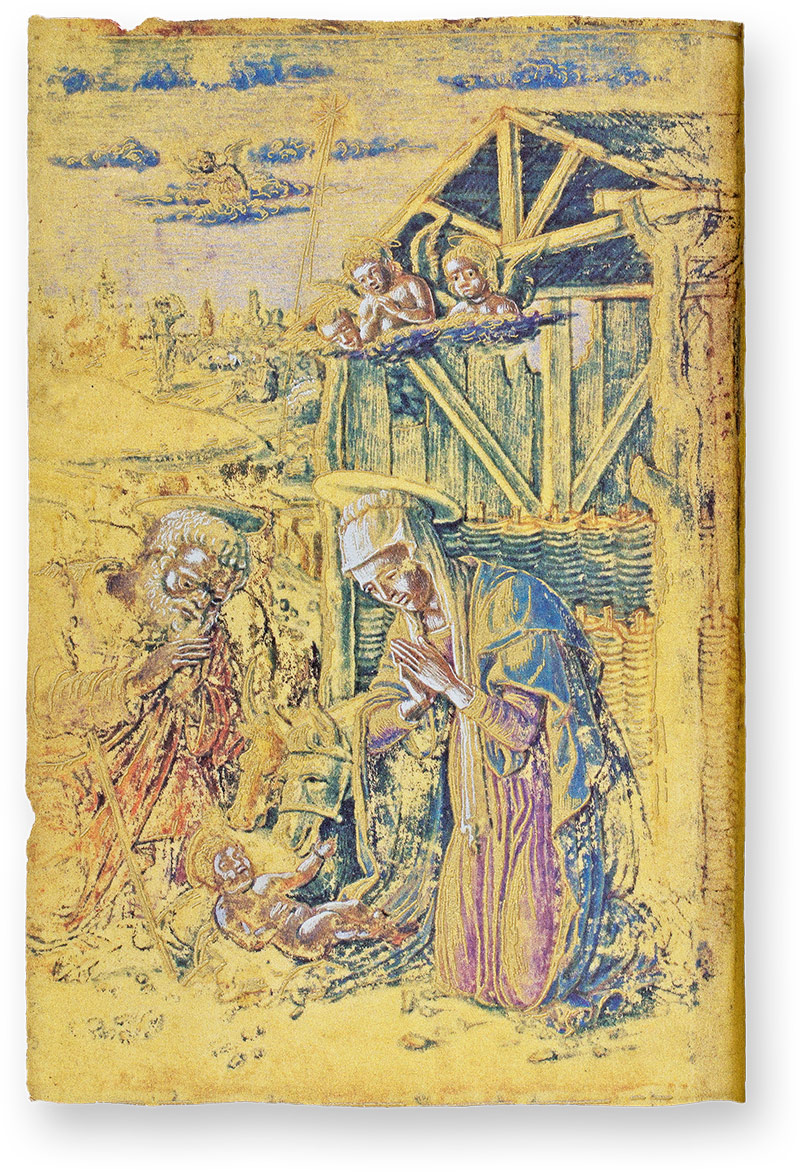
To the facsimile
The static nimbus disc developed into the nimbus plate during the Trecento and was also initiated by Giotto in the Scrovegni Chapel. Glories no longer had to be unaltered discs behind the heads of the saints, but could now be shortened in perspective. This allowed them to hover diagonally above the heads of the associated figures and assume different positions in the pictorial space depending on the position of the head.
However, the nimbus plate did not solve the concealment problem either: each fully colored halo obscured what was behind it, which was particularly challenging when depicting groups of people, but also detracted from the increasingly detailed scenes.
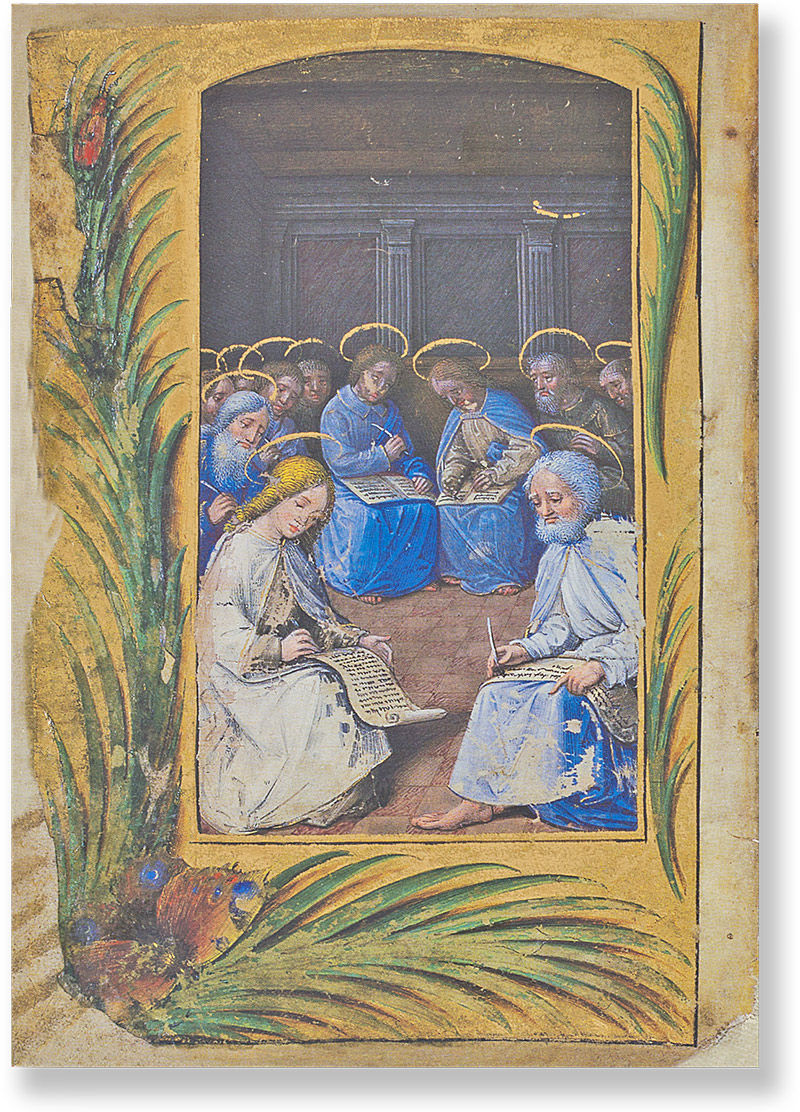
To the facsimile
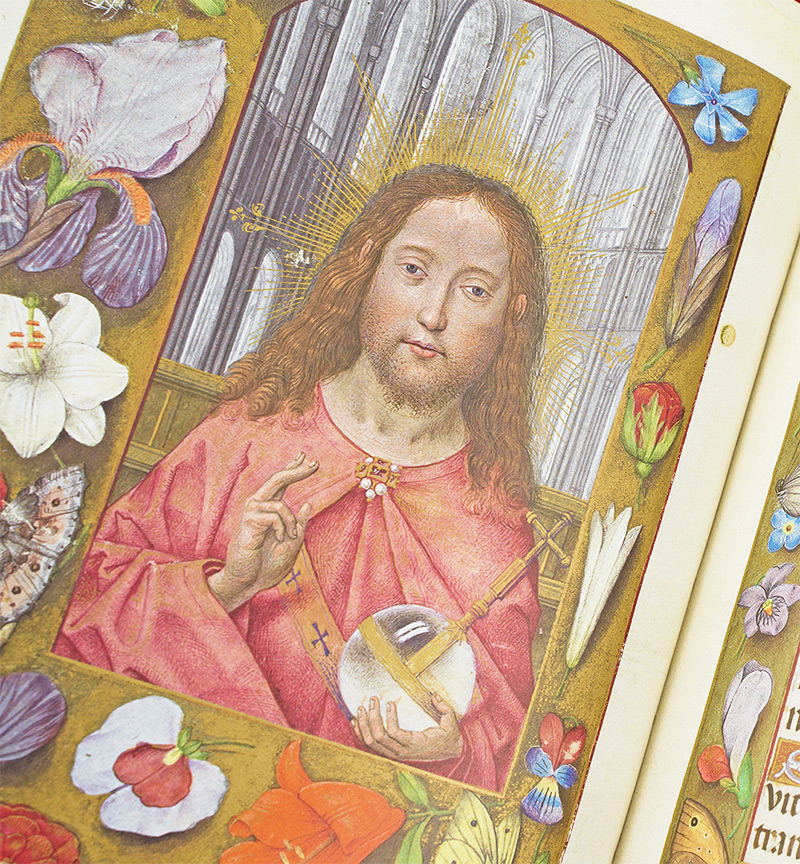
To the facsimile
One solution was the hoop nimbus, which only subtly identifies the sanctity of the figures. On the other hand, the Late Middle Ages brought forth the ray nimbus, in which mostly golden rays of light emerge from behind the head of the figure in all directions and clearly embody the divine glow of the saint. In depictions of God, the rays could also form three bundles, indicating membership in the Trinity. In the Salvator miniature of the Book of Hours of Isabella of Castile, the three bundles of rays also form lily-like endings that particularly emphasize the trinity.
Mandorla and Aureole
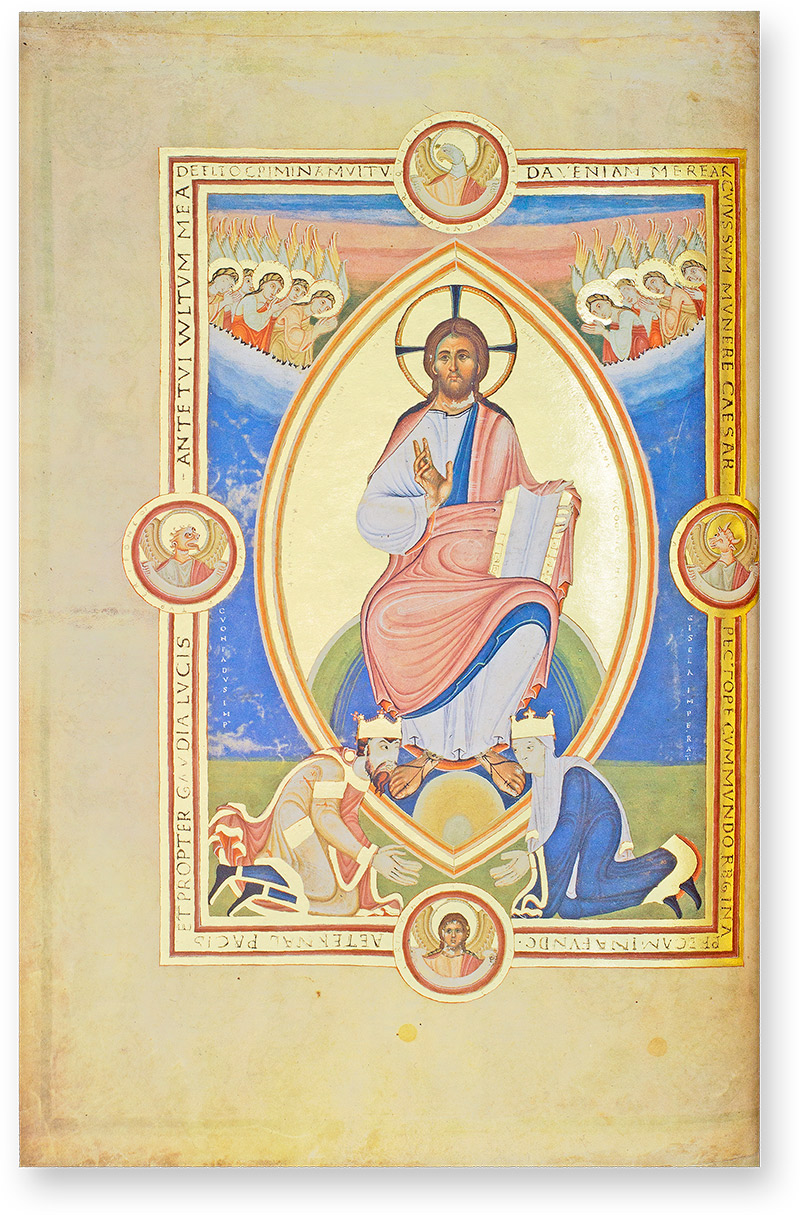
To the facsimile
As full-figure auras, the aureole as well as the mandorla (Ital. for "almond") particularly emphasize central figures. They can indicate the divine nature and special holiness of Christ and God, but also be a sign of divine protection – e.g. in depictions of Mary. Thus, these expressions of the gloriole are particularly common in images of the Mother of God enthroned with Child as well as the Majestas Domini and the like. In contrast to the nimbus, they enclose the entire body of a figure with a sheath of light.
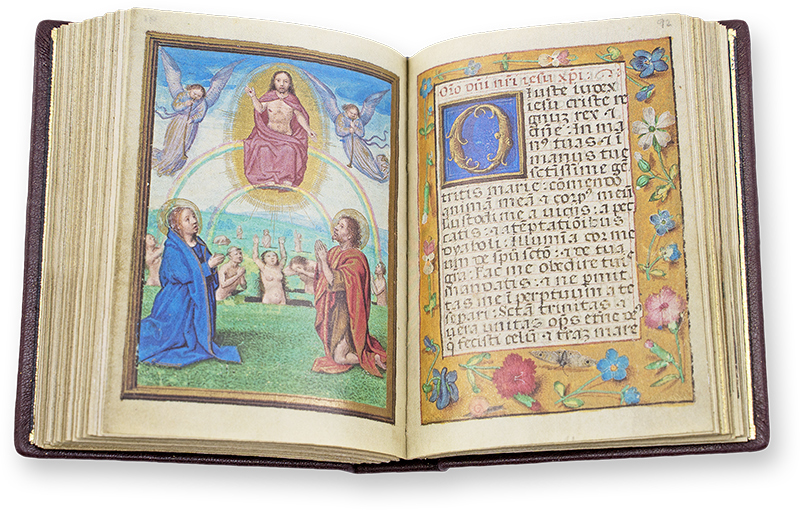
To the facsimile
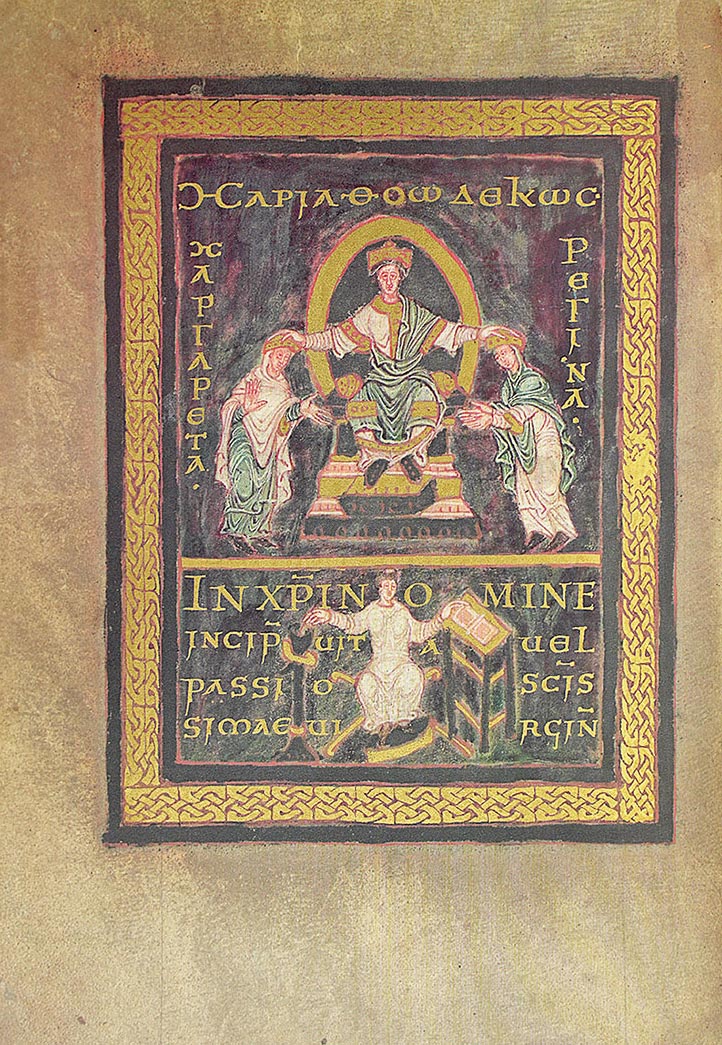
To the facsimile
The aureole appears as an unspecific ring of light that embraces the figure in its entirety. Thus, the divine light in the Van Damme Book of Hours seems to radiate out from Christ, who is enthroned as the world's judge on two rainbows.
A mandorla, on the other hand, is a clear geometric shape that frames the figure and is usually almond-shaped. It was initially depicted with rounded ends, as in e.g. the Vitae of St. Kilian and St. Margaret, which subsequently tapered to a point.

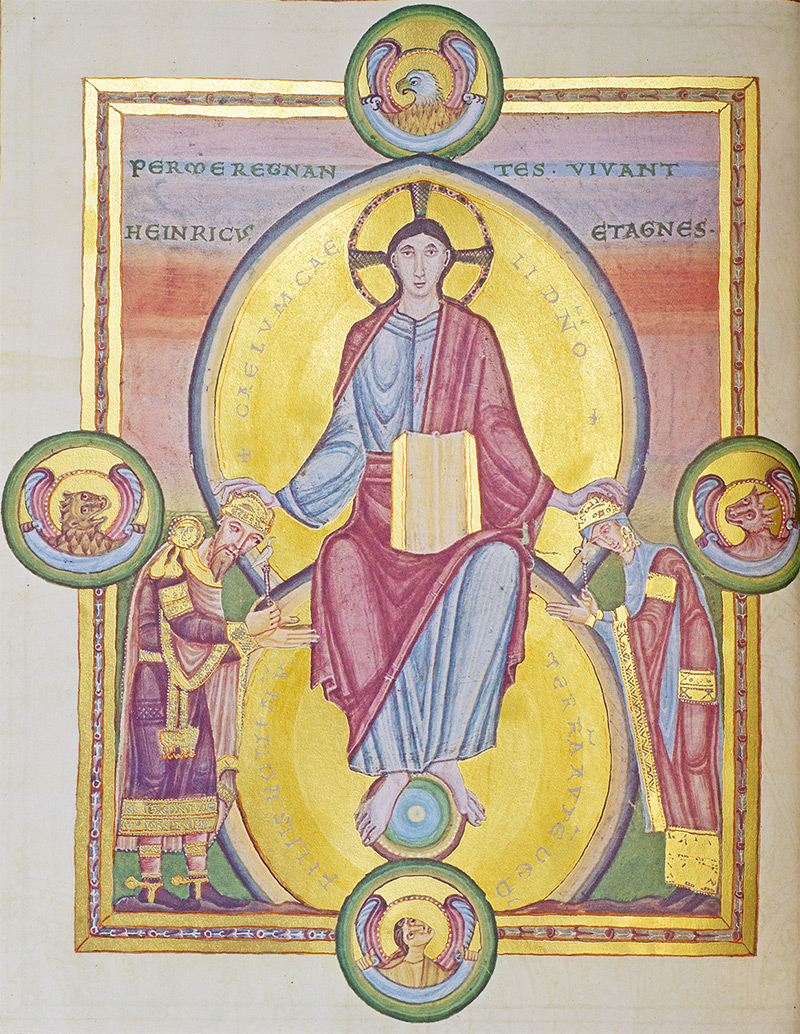
To the facsimile
However, numerous special forms of the mandorla also developed. These include, among others, the circular gloriole, which resembles a disc nimbus but encloses the entire figure as a circular appearance of light.
The Codex Caesareus Upsaliensis, on the other hand, contains a wonderful example of a figure-8-shaped mandorla consisting of two overlapping circles. It is interpreted in terms of Christ's or God's double radiance, referring to his two natures (divine and human), but also to heaven and earth, and developed in the Tours school during the Carolingian period.
Another type emerged here: the diamond-shaped mandorla. It refers to the cosmos as the throne of Christ.
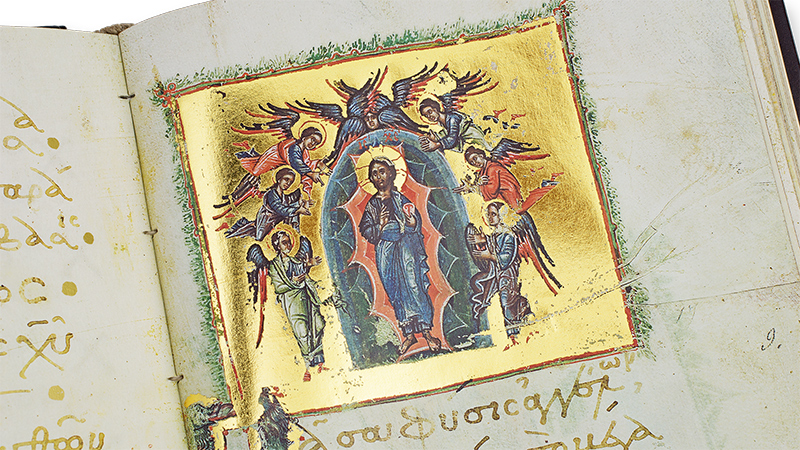
To the facsimile
In Late Byzantine Art, moreover, the serrated mandorla developed, which even appears in double layers in the Moscow Akathistos. Behind the striking red (sun-colored) glory, which emerges fire-like from Christ, hides another dark blue serrated mandorla. The impressive depiction is framed by another blue aura and a wreath of adulating angels.
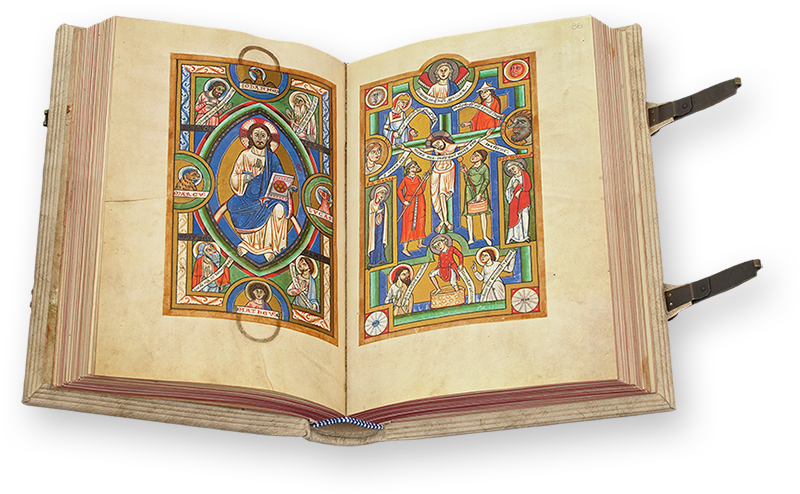
To the facsimile
In the High Middle Ages, artists used mandorlas not only in the sense of the sacred light phenomenon and its various levels of meaning, but also to support the composition of the picture. Thus, the glorioles often became part of complicated frameworks, such as in the Stammheim Missal. Here they not only serve to decorate the sacred figures, but also form their own pictorial space and delimit them from other figurative elements. Not only the classical mandorla was used, but also its special forms, as shown in the Lorsch Evangeliary.


